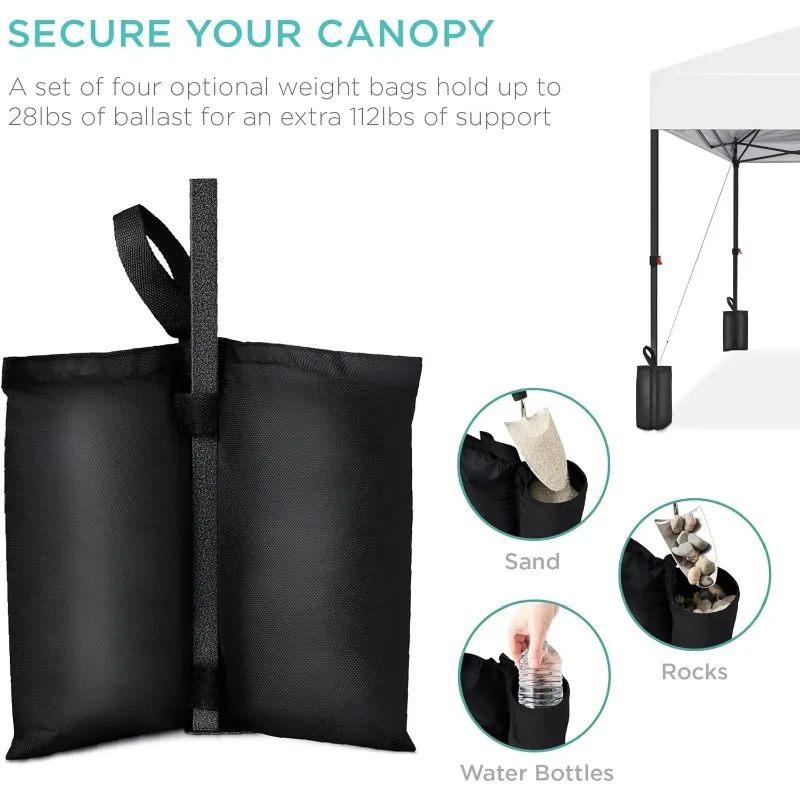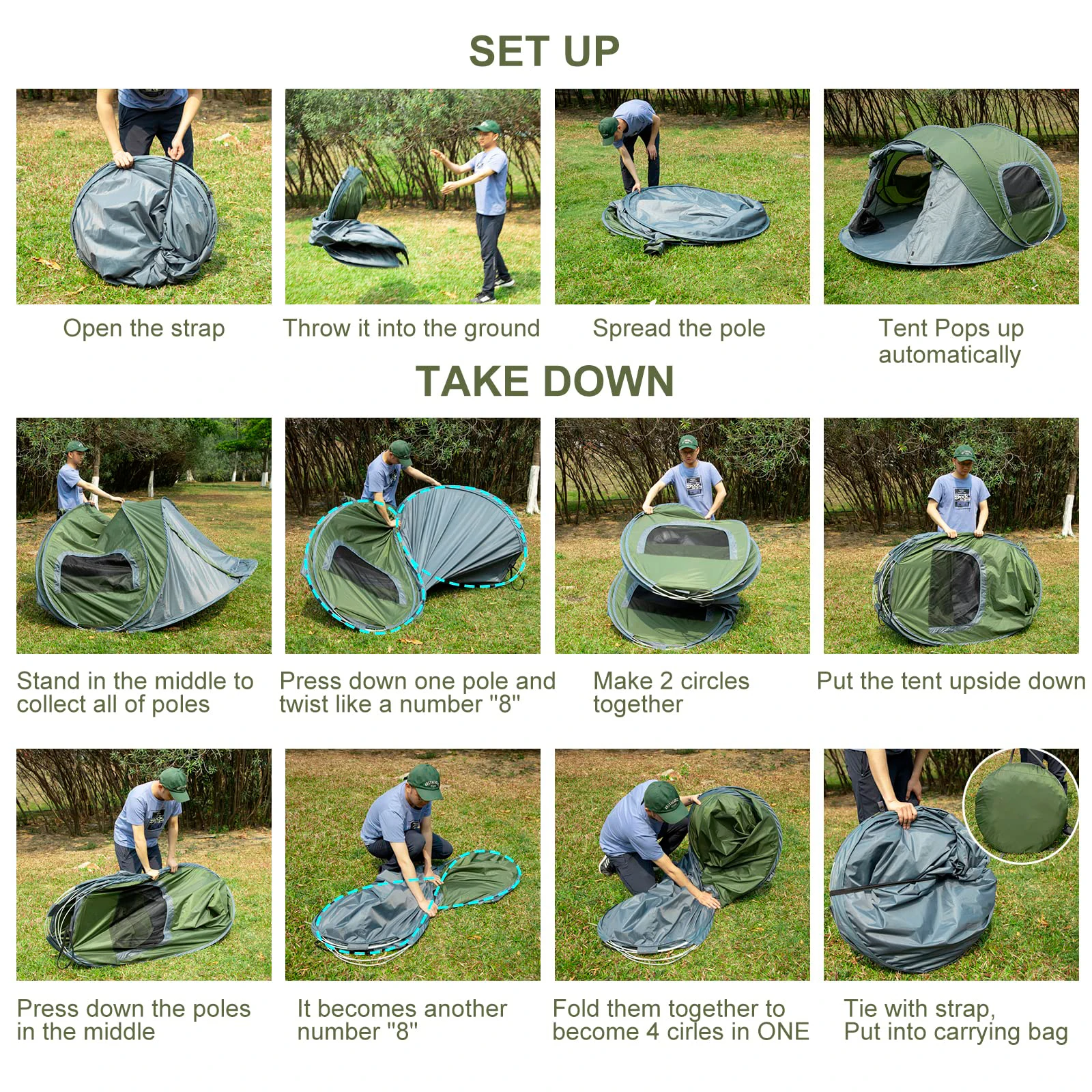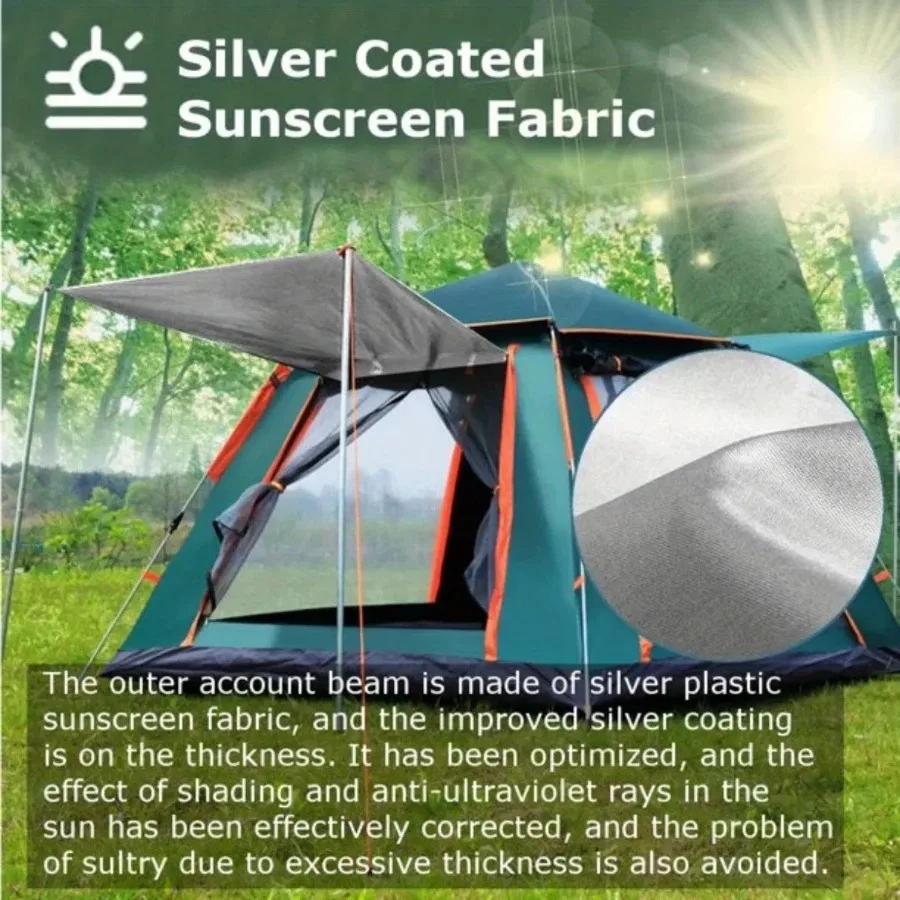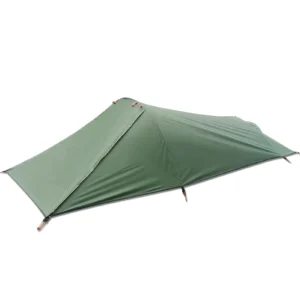1. Understanding Your Shelter Options in the Backcountry
Picture this: you’re three days into a weeklong backpacking trip when storm clouds suddenly gather overhead. Rain begins to fall, winds pick up, and temperatures drop rapidly. In this moment, your shelter choice isn’t just about comfort—it’s about safety and survival.
The fundamental decision between freestanding and staked (non-freestanding) shelters impacts nearly every aspect of your backcountry experience. This choice determines not only how much weight you’ll carry but also how quickly you can set up camp, what terrain you can comfortably pitch on, and how protected you’ll be from the elements.
Modern hiking shelter technology has evolved dramatically, offering increasingly specialized options for different adventures and environments. Today’s freestanding shelters for hikers provide remarkable structure and stability, while ultralight staked options have revolutionized weight savings for long-distance trekking.
The “best” shelter isn’t universal—it depends entirely on your specific hiking circumstances, environment, and personal preferences. Throughout this guide, we’ll explore the detailed characteristics of each shelter type, examine their strengths and limitations, and provide a framework to determine which will serve you best on your outdoor adventures. Before investing in a shelter system, understanding the practical implications of freestanding hiking shelters compared to their staked counterparts is essential for making an informed decision.
2. Defining Shelter Types: From Freestanding to Stake-Dependent
Freestanding Shelters
Freestanding shelters are supported by dedicated pole systems that create a self-standing structure, even without stakes. These shelters maintain their shape and form independently once assembled, though they still require staking for stability in wind and weather. Most freestanding designs feature a double-wall construction with an inner tent body and separate rainfly for excellent ventilation and condensation management.
The freestanding tent structure typically uses aluminum, carbon fiber, or composite poles arranged in dome, cross-pole, or hub configurations. This architecture creates the tent’s signature ability to stand without ground attachment—you can even pick up the fully assembled tent and move it to another location before securing it.
Staked/Non-Freestanding Shelters
In contrast, staked shelters (also called non-freestanding shelters) rely entirely on tension from stakes and guylines to maintain their shape. Without proper staking, these shelters simply collapse. Many utilize trekking poles as structural supports rather than carrying dedicated poles, while others incorporate minimal pole systems that still require stakes to function.
These designs include pyramid shelters, tarps, tarp tents, and many ultralight options. Their structure depends on the tension created between multiple anchor points, making site selection and proper setup crucial for performance.
Semi-Freestanding Designs
Bridging these categories are semi-freestanding shelters that incorporate some pole structure to create partial standing ability, but still require stakes to achieve their full shape and stability. These designs attempt to balance the advantages of both approaches, offering some structural integrity with reduced weight.
Terminology Clarification
You’ll often encounter related terms like “trekking pole tents,” which are non-freestanding shelters using hiking poles for support, or “tensioned shelters,” referring to designs requiring tension from multiple directions. Understanding this terminology helps navigate the increasingly specialized world of backpacking shelters.
3. At-a-Glance: Comparing Key Features and Performance
| Feature | Freestanding Shelters | Staked Shelters |
|---|---|---|
| Weight | 3-5 pounds (1.4-2.3 kg) | 1-2 pounds (0.45-0.9 kg) |
| Packed Size | Larger (pole length) | Smaller (very compact) |
| Setup Complexity | ★★☆☆☆ (Simpler) | ★★★★☆ (More complex) |
| Weather Resistance | ★★★★☆ | ★★★★★ (when properly pitched) |
| Site Versatility | ★★★★★ | ★★☆☆☆ (requires suitable ground) |
| Interior Space | ★★★★☆ (more vertical walls) | ★★★☆☆ (sloping walls) |
| Price Range | $$-$$$$ | $-$$$$ |
| Durability | ★★★★☆ | ★★★☆☆ (fewer components but thinner materials) |
The comparison between these shelter types extends beyond simple specs. Many advanced backpackers gravitate toward freestanding vs. non-freestanding ultralight tents based on their specific adventure style, balancing factors like weight sensitivity against convenience and versatility.
4. Freestanding Shelters: When Versatility and Ease Trump Weight

Advantages (Pros)
- Intuitive Setup: Even beginners can quickly master the assembly process, with color-coded poles and straightforward designs.
- Versatile Pitching: Can be set up on challenging surfaces including rock, sand, snow, and wooden platforms where staking may be impossible.
- Repositioning Ability: Once assembled, the entire shelter can be lifted and moved to find the optimal site without complete disassembly.
- Superior Living Space: The structured pole system creates near-vertical walls and maximized headroom, enhancing comfort during extended stays.
- Condensation Management: Double-wall construction creates an air barrier between the sleeping area and outer rainfly, effectively managing moisture.
- Inherent Stability: The pole structure provides immediate form and some wind resistance even before staking.
- Snow Load Capacity: Stronger frames better support the weight of accumulating snow, important for winter camping.
Disadvantages (Cons)
- Weight Penalty: Significantly heavier than non-freestanding alternatives, often 1-2 pounds (0.45-0.9 kg) more for comparable protection.
- Packed Size: The rigid pole structure requires more pack space, limiting compression possibilities.
- Higher Cost: The additional materials and complexity generally translate to higher prices.
- Pole Vulnerability: Broken poles can cause catastrophic shelter failure, though field repairs are possible.
- False Security: Many users incorrectly assume staking is optional, when it remains essential for storm protection.
Ideal Uses and Users
Freestanding shelters excel for weekend backpackers, those camping on challenging terrain, and adventures where setup simplicity outweighs weight concerns. They’re ideal for beginners still mastering outdoor skills, groups sharing a shelter where interior space is crucial, and trips where varied or unpredictable terrain might be encountered.
The definitive guide to freestanding shelters highlights how these designs particularly benefit car campers who backpack occasionally, backpackers traveling in rocky or sandy environments, and anyone prioritizing livability over absolute weight savings. Our freestanding backpacking tent collection offers numerous options with different balances of weight and features.
5. Staked Shelters: The Ultralight Approach to Backcountry Protection
Advantages (Pros)
- Dramatic Weight Reduction: Many weigh under 2 pounds (0.9 kg) complete, saving significant pack weight.
- Multi-Use Efficiency: Using trekking poles for support eliminates dedicated tent poles, allowing one item to serve multiple functions.
- Storm-Worthiness: Properly pitched low-profile designs can offer excellent wind resistance with aerodynamic profiles.
- Affordable Options: Entry-level designs can be very cost-effective, though ultralight specialized materials can be expensive.
- Simplified Design: Fewer components mean fewer potential failure points.
- Customizable Pitching: Many models allow for different setup configurations depending on conditions and needs.
- Space Efficiency: Better weight-to-protected-area ratio for sheltering multiple people.
Disadvantages (Cons)
- Ground Dependency: Absolute reliance on suitable ground for secure staking creates limitations.
- Learning Curve: Achieving a proper, taut pitch requires practice and skill.
- Setup Sensitivity: Less forgiving of errors, especially in adverse weather conditions.
- Condensation Challenges: Many use single-wall construction requiring careful management of moisture.
- Limited Interior Volume: Typically feature sloping walls that reduce usable space.
- Fixed Positioning: Limited ability to adjust placement once the shelter is pitched.
Ideal Uses and Users
Staked shelters shine for long-distance thru-hikers, ultralight backpackers, and experienced outdoors people who prioritize pack weight over convenience. They’re perfect for established trails with reliable tent sites, trips where every ounce matters, and users already comfortable with trekking poles.
These shelters are particularly valuable when covering significant daily mileage where the reduced weight directly translates to less fatigue. Our trekking pole backpacking tent selection showcases the variety of non-freestanding options that dramatically reduce pack weight without sacrificing protection.
6. Semi-Freestanding Designs: Finding Middle Ground
Semi-freestanding shelters represent an intriguing compromise, incorporating some pole structure for partial stability while still requiring stakes to achieve full setup. These hybrids typically feature a pole system that supports most of the shelter but leave certain areas—often the foot end or vestibule—requiring stakes for proper tension.
This middle-ground approach offers distinct benefits: they’re lighter than fully freestanding models while providing more structure and easier setup than pure non-freestanding designs. The partial structure makes initial assembly more intuitive, while the reduced pole materials save some weight compared to fully freestanding counterparts, often cutting 4-8 ounces (113-227 g).
However, semi-freestanding shelters come with limitations. They don’t achieve the full benefits of either pure approach, neither matching the complete independence of truly freestanding models nor the minimum weight of dedicated non-freestanding shelters. They particularly benefit backpackers transitioning toward lighter gear without the steeper learning curve of pure staked shelters.
Many lightweight backpacking tent options utilize this hybrid approach, offering a balanced compromise between the shelter categories.
7. Decision Framework: Matching Shelter Type to Your Adventure Style

Finding your ideal shelter requires evaluating several key factors:
Trip Type and Duration: Weekend backpackers can often accept slightly heavier freestanding designs for their convenience, while thru-hikers covering thousands of miles typically prioritize the weight savings of non-freestanding shelters. Longer trips generally increase the importance of weight reduction.
Terrain and Camping Environments: Rocky ground, desert sand, wooden platforms, and snow present challenges for staking, making freestanding shelters advantageous. Forest floors and established campsites easily accommodate either design. Consider which environments you’ll encounter most frequently.
Typical Weather Conditions: Both shelter types can handle challenging weather when properly pitched, but each excels differently. Freestanding designs often handle snow loads better, while low-profile non-freestanding shelters can offer excellent wind performance.
Weight Sensitivity: How important is minimizing your pack weight? A thru-hiker covering 2,000+ miles might readily accept less comfort to save 2 pounds (0.9 kg), while a weekend backpacker might prefer additional comfort.
Setup Circumstances: Consider when and how you typically make camp. Setting up in darkness, exhaustion, or storm conditions may favor the simpler assembly of freestanding designs. Solo hikers might appreciate this simplicity, while partners can manage more complex setups.
Experience Level: Beginners often benefit from the intuitive nature and forgiveness of freestanding shelters while developing their skills. Understanding how trekking pole tents work requires practice to master.
Livability Requirements: If you spend significant time in your shelter beyond sleeping—during storm days or as a social space—the increased headroom and vertical walls of freestanding designs become more valuable.
Budget Constraints: While high-end options exist in both categories, entry-level non-freestanding shelters often represent the most affordable starting point, though specialized ultralight materials can become very expensive.
8. Essential Skills: Maximizing Performance With Any Shelter Type
Stake Selection and Use
- Quality stakes dramatically outperform the basic stakes included with many shelters
- Match stake types to terrain: Y-stakes for versatility, needle stakes for hard soil, snow stakes or anchors for snow/sand
- Drive stakes at a 45° angle away from the tent for maximum holding power
- In challenging conditions, consider placing rocks on top of stakes for additional security
Site Selection Mastery
- Look for natural windbreaks like trees, rocks, or terrain features
- Identify high points with good drainage to prevent pooling water under your shelter
- Avoid hazards like dead branches (“widowmakers”), potential drainage paths, and avalanche zones
- Follow Leave No Trace principles by using established sites when available
Pitching Techniques
- Always stake into the wind first when dealing with windy conditions
- Achieve even tension on all guylines by adjusting from opposite corners
- Loosen slightly in rainy conditions as fabric may tighten when wet
- For freestanding tents on rocky terrain, ensure the base is stable even before staking
Condensation Management
- Ventilate aggressively—open vents and doors when conditions permit
- Avoid camping near water sources when possible to reduce ambient humidity
- Consider site selection that allows for prevailing breezes
- In double-wall tents, ensure the rainfly doesn’t directly contact the inner tent
- Wipe down interior walls in the morning if condensation occurs
Proper site selection, quality stakes, and good technique significantly improve the performance of any shelter. Even a budget shelter can perform admirably with expert setup, while the most expensive waterproof backpacking tent will fail if poorly pitched.
9. Can You Set Up Your Shelter Without Stakes? Emergency Techniques
There are times when traditional staking isn’t possible—perhaps you’re on solid rock, a wooden platform, or have lost or broken your stakes. In these situations, improvisation becomes essential.
For freestanding shelters, emergency techniques include:
- Using rocks to secure corners and guy points—place smooth, heavy stones directly on fabric reinforcement points
- Creating anchor bags by filling stuff sacks or extra clothing with rocks or sand, then tying guylines to these improvised anchors
- Using natural features like trees, roots, or large rocks as attachment points for guylines
- Placing heavy gear inside the tent’s corners to provide additional stability
Non-freestanding shelters present a greater challenge without stakes but can sometimes be adapted by:
- Building rock anchors where guylines wrap around carefully constructed rock stacks
- Using heavy logs or branches as linear anchors
- Adapting the pitch to use fewer anchor points, accepting a less stable configuration
- In absolute emergencies, employing hiking gear like ice axes, trekking poles, or backpacks as anchors
These techniques aren’t ideal but understanding them provides valuable contingency options. The greater versatility of types of freestanding shelters for hiking becomes particularly evident in these challenging circumstances.
10. Popular Questions About Shelter Selection

Are freestanding tents worth the extra weight?
For many backpackers, the answer is yes. The convenience of quick setup, versatility across different terrain types, and typically more comfortable living space justify carrying an extra 1-2 pounds (0.45-0.9 kg). However, for long-distance hikers where every ounce matters over thousands of miles, the weight penalty becomes more significant. Consider how frequently you’ll benefit from the freestanding advantages—if you primarily camp on established sites with good soil, the weight savings of non-freestanding designs may better serve you.
What makes a shelter “ultralight” and how important is this classification?
“Ultralight” typically refers to complete shelter systems weighing under 2-2.5 pounds (0.9-1.1 kg). However, this classification matters far less than how the shelter weight contributes to your overall pack weight strategy. A shelter that constitutes 10-15% of your total pack weight is generally considered reasonable. Focus more on the shelter’s appropriateness for your specific needs rather than its weight classification alone.
Which shelter types perform best in specific conditions?
In high winds, low-profile staked shelters often excel due to their aerodynamic shapes, though proper pitch and orientation are crucial. For heavy rain, either design works well when properly pitched, though freestanding models often offer more interior space to avoid touching wet walls. For snow loading, the structured poles of freestanding shelters typically provide superior support. Mastering wind stability with a freestanding tent involves proper site selection and generous staking with guy lines.
Do I really need a specialized shelter for different trips?
While having a “quiver” of specialized shelters is ideal, most backpackers can find one versatile option that handles 80-90% of their adventures. Consider your most common trip type rather than the extremes. Many experienced backpackers eventually acquire two shelters—one lightweight option for fair-weather trips and one more robust design for challenging conditions.
Lightweight Backpacking Tent, Ultralight Backpacking Tent, Ultralight Bivy Tent
Ultralight Single Person Camping Tent with Aluminum Poles for 3-Season Backpacking Waterproof DesignPrice range: $94.88 through $326.82 Select options This product has multiple variants. The options may be chosen on the product pageLightweight Backpacking Tent, Ultralight Backpacking Tent, Waterproof Backpacking Tent
$391.05 Select options This product has multiple variants. The options may be chosen on the product pageHeavy Duty 4 Season Tent, Mountaineering Tent, Winter Camping Tent
$870.40 Select options This product has multiple variants. The options may be chosen on the product pageCompact Backpacking Tent, Lightweight Backpacking Tent, Waterproof Camping Tent
$335.52 Select options This product has multiple variants. The options may be chosen on the product pageUltralight Backpacking Tent, Ultralight Dome Tent, Winter Camping Tent
Price range: $369.63 through $370.07 Select options This product has multiple variants. The options may be chosen on the product pageHeavy Duty 4 Season Tent, Ultralight Freestanding Tent, Winter Camping Tent
$3,722.66 Select options This product has multiple variants. The options may be chosen on the product page
11. Is a Trekking Pole Tent Right for You?
Trekking pole tents represent a specialized subset of non-freestanding shelters that use hiking poles for structural support instead of dedicated tent poles. This multi-use approach can save 8-16 ounces (225-450 g) from your pack weight by eliminating the need for separate tent poles.
However, this design makes the most sense if you already hike with trekking poles. If you don’t currently use poles, adding their weight just for shelter support often negates the weight advantage. Additionally, consider the practicality of shelter access—when your poles support your shelter, they’re unavailable for hiking around camp.
The setup typically requires more fine-tuning than freestanding designs, with precise pole height adjustment and careful tensioning. While there’s definitely a learning curve, many hikers find the weight savings worth mastering these techniques.
Our ultralight trekking pole tent options showcase how these specialized shelters can dramatically reduce pack weight for those willing to adapt their systems.
12. How Do Extreme Conditions Change Your Shelter Choice?
Extreme conditions significantly shift shelter priorities. In high winds exceeding 30 mph, low-profile aerodynamic designs with multiple anchor points provide the best protection, regardless of whether they’re freestanding or non-freestanding. What matters most is the shelter’s ability to shed wind and maintain structural integrity.
For heavy snow, strong pole structures become critical to prevent collapse under accumulating weight, generally favoring robust freestanding designs or specialized mountaineering shelters. In desert heat, maximizing ventilation and shade becomes paramount, often making double-wall designs with large mesh panels advantageous.
Extended rain presents unique challenges where condensation management and vestibule space for wet gear storage become essential considerations. Double-wall designs typically manage interior moisture better, while shelters with generous vestibules accommodate wet equipment regardless of type.
For truly challenging environments like high-altitude alpine zones or winter expeditions, specialized 4-season winter 2-person tents provide the necessary protection beyond standard backpacking shelters.
13. Finding Your Perfect Backcountry Home
As we’ve explored throughout this guide, there is no universally “best” shelter—only the best match for your specific needs and circumstances. Freestanding shelters offer convenience, intuitive setup, and versatility across various terrain types at the cost of additional weight. Staked shelters provide significant weight savings and often excellent weather performance but require more skill and suitable ground for setup.
Your ideal shelter reflects your backpacking philosophy—where you prioritize weight savings versus convenience, simplicity versus feature richness, and specialized performance versus versatility. Most importantly, expertise in setup and site selection can overcome many limitations of either shelter type.
We encourage you to honestly assess your priorities, typical conditions, and the environments where you’ll be hiking most frequently. At Explore Elements, we’ve tested our shelters across diverse conditions from desert heat to mountain snow, ensuring reliability whether you’re embarking on a weekend getaway or extended wilderness expedition. Your backcountry shelter choice is personal—and finding that perfect match makes every night outdoors more comfortable and secure.







